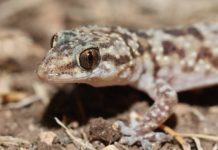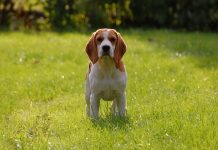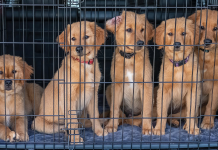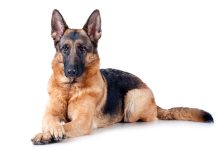Summer holds some dangers for dogs. Be it plants, other animals or simply the high temperatures – there are a few things to consider in the warm season.
Dangerous plants for dogs in summer

Toxic plants
If there is not much going on in terms of vegetation in Europe in winter, it is naturally different in summer. The risky plants include, for example, the hogweed, but also fantastically blooming elder or hydrangeas. Dogs should not eat these plants, otherwise they can show symptoms of poisoning such as vomiting and diarrhea. Depending on the amount consumed, poisonous plants can also be deadly. The evergreen plants ivy, yew and boxwood are present all year round and are also poisonous.
Blue-green algae in the water
Especially in stagnant water, high temperatures often lead to the formation of blue-green algae, which causes the body of water to tip over. You can recognize this by the fact that greenish streaks form on the surface, the water is greenish-brown and the depth of visibility is less than one meter. Prevent your dog from drinking from or swimming in these waters.
The toxins of these blue-green algae – so-called toxins – can lead to cramps, paralysis, bloody diarrhea, liver bleeding and death within 24 hours after ingestion (drinking or eating algae mats!).
FIRST AID FOR BLUE SEAWEED: Rinse mouth and coat with clean water and administer ACTIVATED CHARCOAL. Call the vet immediately and announce your coming.
Other poisonings/intolerances

Poison bait
When browsing someone else’s garden, dogs may come across poisoned bait to repel rats or other pests. In public green areas, these are usually clearly marked and placed in a dog-safe manner. If the dog has ingested rat poison, it is essential to consult a veterinarian as soon as possible!
Intolerance of sausages, steak, and co.
Also seasonally more common: intolerance to grilled food. Meat and sausages for the grill are often marinated and seasoned, which does not go well with the dog’s stomach. Kebab skewers harbor other dangers. So watch over the plate with the grilled food and of course the burning grill, otherwise there is a risk of burns!
Injuries and accidents
Heat stroke in the dog
When the temperatures are particularly high, heat stroke is always an issue. The dog is no longer able to regulate its body temperature, in particular by panting (or less by sweating). This is particularly common when dogs are left in the car, even “just for a moment”. A car can heat up incredibly quickly in summer, so the same applies as with babies: Never leave your dog alone in the car, really never!
Dogs in general can be affected by the heat. Older animals in particular are more likely to have circulatory problems. On the other hand, it helps: Always allow access to fresh water, offer shade and go for walks in the early morning hours or in the cooler evenings.
Water rod after swimming
Also common in summer is the so-called water rod. This disease particularly affects dogs that are worked hard, e.g. because they are used for hunting. It can be recognized by the characteristic tail position: the tail is stretched out a few centimeters straight, the rest hangs limp and kinked. The exact causes are not yet clear, but the disease is painful and should be treated.
Paw burns from hot surfaces
Dogs can burn their paws not only from the grill, but also from walking on hot surfaces (asphalt, metal grilles, plastic covers, etc.). Due to the fur, these are often overlooked and yet they are very painful.
Inflamed skin – hot spots
Long-haired dogs that bathe a lot in the summer are at a higher risk of developing so-called hot spots. These inflamed patches of skin have a variety of causes, but the warm, humid environment after bathing increases the likelihood of them developing.
Dangerous wild animals and insects
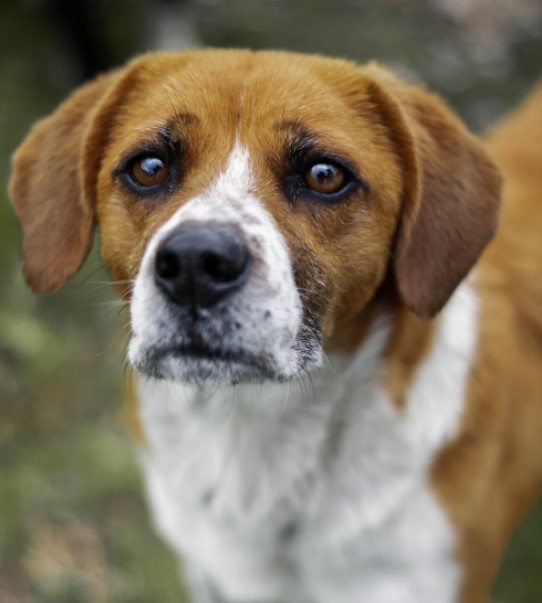
Of course, wild animals and insects are also more active in summer than in the cold season.
Ticks
Tick bites are not only unpleasant, ticks can also transmit various infectious diseases. Dogs should therefore be given suitable protection against ticks. This usually also protects against the larvae of the autumn grass mite, whose bites can cause severe itching. The larvae are usually active between August and October and only in some regions of Germany.
Oak processionary moth
The caterpillar of the oak processionary moth, a butterfly, has poisonous stinging hairs that can trigger severe skin reactions including allergic shock. Wasp or other insect stings can also cause allergic reactions.
Beavers and wild boars

Depending on the region and the landscape, other animals can become dangerous for dogs: Attacks on dogs are more common when wild animals are nesting and resting. Beavers are very aggressive near their nests and will sometimes bite dogs’ throats while they are drinking, which can be fatal to the dog. You should also not approach a sow (female wild boar) leading young animals!




